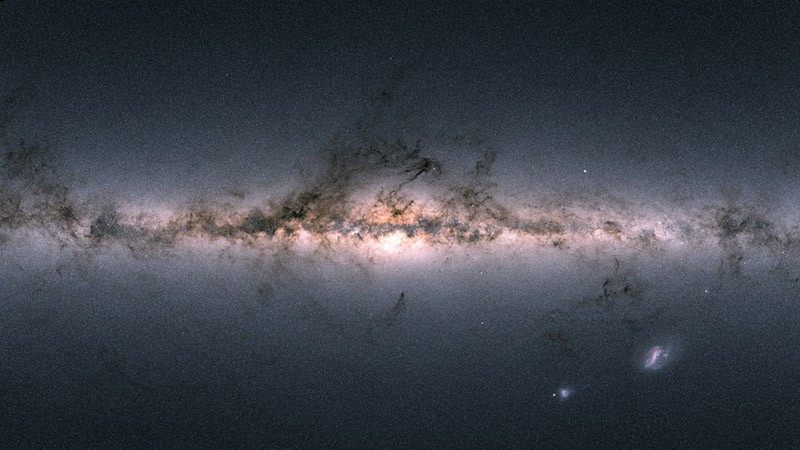All galaxies, including our own Milky Way, contain dark matter. But how much dark matter does the Milky Way have? This is a question that does not have a definite answer; turns out you can’t just weigh the galaxy on a scale and record the mass of dark matter. But that hasn’t stopped astronomers from trying to work out the answer, and recently a team at UCI led by M. Katy Rodriguez Wimberly (@AstronoMouse_) has placed the tightest constraints on the mass of the Milky Way’s dark matter to date.
But why would you even want to know the mass of the Milky Way’s dark matter? We believe it directly affects the life cycle of the satellite dwarf galaxies which surround the Milky Way. While we have only limited observational data, it is thought that the Milky Way’s satellite dwarf galaxies are more massive than those in most other nearby galaxies. And we also know that a high fraction of the Milky Way’s satellite dwarf galaxies are “quenched”, meaning they are no longer forming new stars. Is there a connection between the environment a dwarf galaxy forms in (i.e. the dark matter mass of its parent galaxy) and the time it takes to quench star formation? Presently we don’t know. But the first step is to accurately measure the Milky Way’s dark matter mass. To constrain this value, Rodriguez Wimberly et al. 2021 looked at two sources of data.
First, using the Gaia space telescope, they were able to precisely measure the 6-dimensional phase space of a selection of Milky Way satellite dwarf galaxies. This is to say they measured the position of a satellite galaxy in all 3 spatial dimensions (x, y, and z), and the velocity in those same 3 dimensions. This creates a 6 dimensional vector which precisely describes both where the satellite dwarf galaxy is right now and its position at any future time. Doing this for every satellite dwarf galaxy allowed them to build up a map of how the satellite dwarf galaxies are moving under the influence of the Milky Way’s gravitational influence.
Second, they used data from large scale simulations of galaxies and their satellite dwarf galaxies. From these simulations, they can also precisely measure the simulated dwarf galaxy’s 6 dimensional vector and create similar maps of how those satellite dwarf galaxies move under their host galaxy’s gravitational influence. By statistical inferences, they can compare these maps of the simulated galaxies to the real Milky Way’s map. Simulated satellite dwarf galaxies that move in a similar way to our Milky Way’s satellite dwarf galaxies then tell us that the amount of dark matter in their simulated host galaxy is similar to that in our Milky Way. This allows the team to make a measurement of the Milky Way’s dark matter mass from comparing simulations to real data.
In their conclusion, Rodriguez Wimberly et al. 2021 finds that our Milky Way galaxy has a dark matter mass of between 1.0 and 1.2 trillion solar masses! That might sound like a wide range of possible values, but it is actually quite narrow for comparable works in this sub-field. And that’s how you measure a galaxy’s dark matter mass!
Post by Jack Lubin, a graduate student at UCI
Edited by Dylan Green
